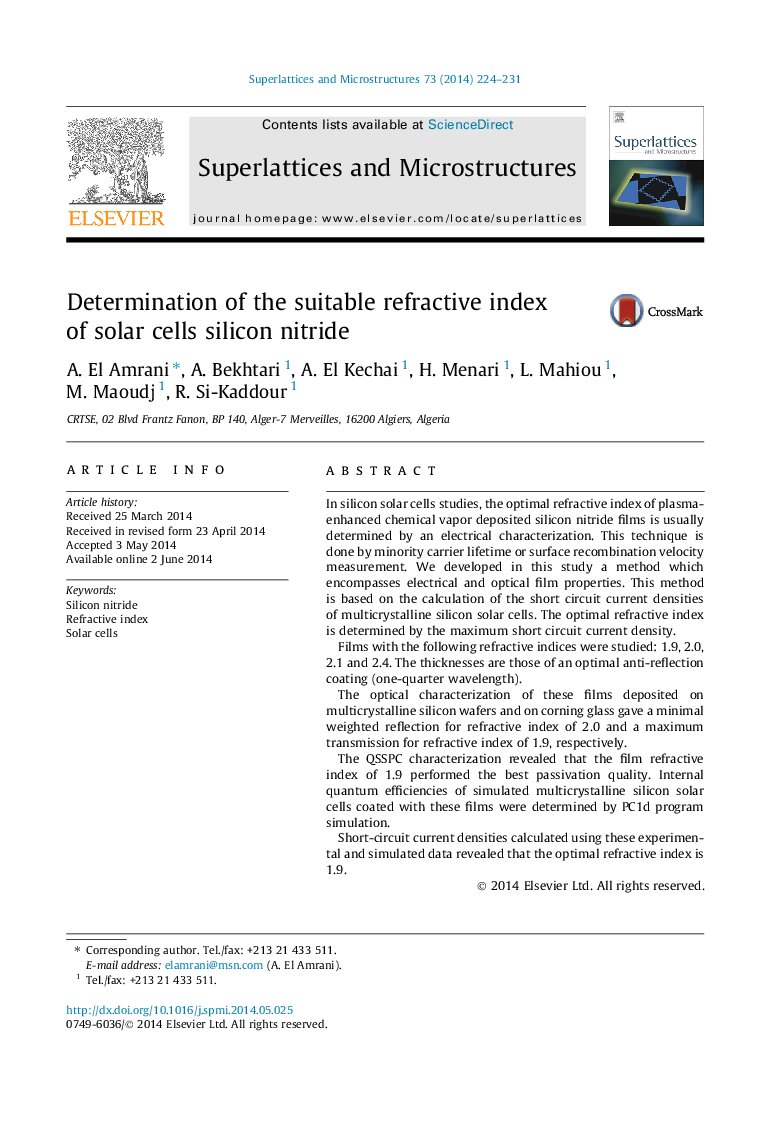| کد مقاله | کد نشریه | سال انتشار | مقاله انگلیسی | نسخه تمام متن |
|---|---|---|---|---|
| 1553317 | 1513228 | 2014 | 8 صفحه PDF | دانلود رایگان |
• Optimization of silicon nitride refractive index enhances solar cells efficiency.
• Optimization consists of solar cells short circuit currents calculation.
• Calculation uses data from experiments and from PC-1d simulation.
• Refractive index 1.9 is the optimal for non-encapsulated solar cells.
In silicon solar cells studies, the optimal refractive index of plasma- enhanced chemical vapor deposited silicon nitride films is usually determined by an electrical characterization. This technique is done by minority carrier lifetime or surface recombination velocity measurement. We developed in this study a method which encompasses electrical and optical film properties. This method is based on the calculation of the short circuit current densities of multicrystalline silicon solar cells. The optimal refractive index is determined by the maximum short circuit current density.Films with the following refractive indices were studied: 1.9, 2.0, 2.1 and 2.4. The thicknesses are those of an optimal anti-reflection coating (one-quarter wavelength).The optical characterization of these films deposited on multicrystalline silicon wafers and on corning glass gave a minimal weighted reflection for refractive index of 2.0 and a maximum transmission for refractive index of 1.9, respectively.The QSSPC characterization revealed that the film refractive index of 1.9 performed the best passivation quality. Internal quantum efficiencies of simulated multicrystalline silicon solar cells coated with these films were determined by PC1d program simulation.Short-circuit current densities calculated using these experimental and simulated data revealed that the optimal refractive index is 1.9.
Journal: Superlattices and Microstructures - Volume 73, September 2014, Pages 224–231
